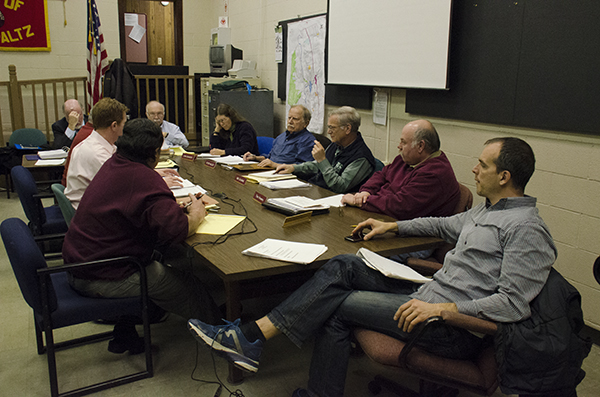
The New Paltz Town Planning Board met on Feb. 25 to discuss the Final Environmental Impact Statement (FEIS) for the Park Point project, as well as the potential fiscal impacts.
During the public forum, town resident Paul Brown made comments concerning Wilmorite’s presentation to the Ulster County Industrial Development Agency (IDA) on Feb. 13 and their tax exemption application.
Brown said Wilmorite is applying for three exemptions, including a payment in lieu of taxes (PILOT), sub-lease transaction and a mortgage-tax for a 25-year period. If the IDA approves Wilmorite’s application, he said the for-profit developer could pay “under $200,000” annually while saving themselves nearly $1.5 million.
“The potential fiscal impacts on the town of New Paltz, the New Paltz Central School District and Ulster County — the three taxing authorities — can only be accurately evaluated once you gather the information, once you know how much the taxing authorities would lose over the next 25 years,” Brown said.
Before the meeting, Wilmorite submitted a 63-page document to the Planning Board, which included a one-page table of contents and “consolidated public comment,” according to Wilmorite’s Director of Business Tom George.
“We did a follow up to the public comment, the written comment, [and] the transcripts — everything that was collected…was then organized,” George said.
The table of contents listed sections A through T, which included topics like soils, geography, topography, surface and ground water, then all corresponding public comments were organized under each heading.
While Wilmorite is still in the process of organizing the comments, George said they plan to create a response document, which will be formatted for the FEIS. He also said they will submit a “document matrix” or spreadsheet, listing every person or agency that supplied comments.
“This is basically going to be a chart for every person who made comments and what category [they] fell under, so it’s an easy process for the planning board to ensure that every comment was documented,” George said.
Even after identifying and categorizing the comments, Planning Board Chairman Mike Calimano said he thinks they’re at the “beginning stages” of the process.
“Now the challenge is to address and respond to them [the comments], which would be the FEIS,” Calimano said.
Calimano said he was “uncomfortable” with the idea of having the public review three separate documents — the Draft Environmental Impact Statement (DEIS), a synthesized comment section and a response document. He said he would like for the FEIS to stand alone and “tell the whole story.”
“If that means cutting, pasting and pulling out of the DEIS, followed by comments, explanations, clarifications and additional detail, I think it’s a document — although longer — [that] is better handled by people,” Calimano said. “The idea that everybody would have to go back to the DEIS, then the comments, then look at the conclusions…just makes it more complicated.”
Board member Lynn Bowdery expressed concern that topics from the DEIS that went unaddressed during public comment would be “forgotten,” and board member George Lithco said two things must be done when preparing the FEIS — replying to the comments and responding to, or “modifying,” the DEIS.
However, board member Tim Rodgers said he would like the board to never have to look at the DEIS again.
“The FEIS should be a reconfigured DEIS with public comments [and] responses to things that are unclear,” Rodgers said.
Calimano said there are a lot of things in the DEIS that should be tossed and, moving forward, it shouldn’t “cloud” the board members thoughts.
“It was poorly written, it didn’t address the subject as we found out in a number of different areas,” he said. “The FEIS should address the comments and come up with the conclusions.”

